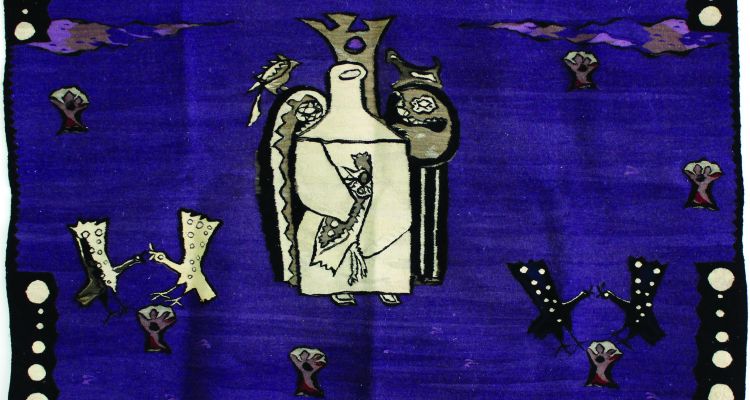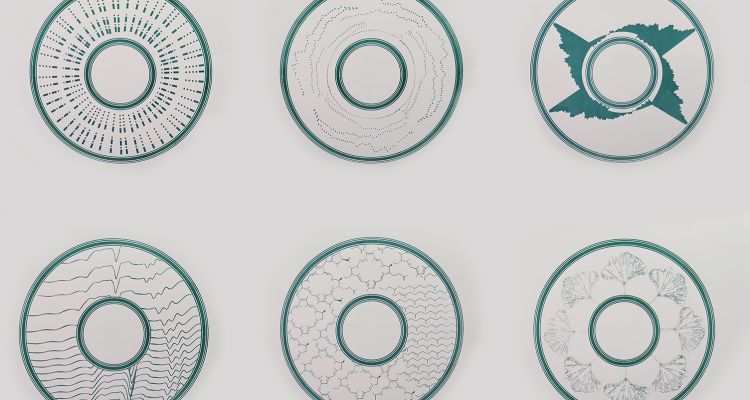Artists:
Mohammed Ahmed Abdalla Abbaro, Makedonka Andonova, Tome Andreevski, Max Aruquipa Chambi, Maria Auxiliadora da Silva, Vladimir Avramchev, Borka Avramova, Antun Bahunek, Stjepan Bastalec, Ibrahim Bedi, Maria Bonomi, Janko Brašić, Gjorgji Capev, Rimer Cardillo, Peter Clarke, Waldemar de Andrade e Silva, Silvia de Leon Charleo, Evgenija Demnievska, Ladyr Harris Domschke - Pulu, Vadim Fishkin, Jordan Grabul, Ion Grigorescu, Lourdes Guanabara, Petar Hadzi Boshkov, Yozo Hamaguchi, Josip Horvat, Dragoslava Janeva, Vojko Janevski, Goce Josifov– Rombo, Milosav Jovanović, Lúcia Kahn, Risto Kalchevski, Sead Kazanxhiu, Stjepan Kičin, Jano Knjazović, Dimche Koco, Dimitar Kondovski, Ivan Kuzmiak, Ivan Lacković Croata, Wifredo Lam, Mihail Lazarov, Borivoje Maksimović, Done Miljanovski, Manolo Millares, Dushko Mishevski, Vangel Naumovski, Adzem Nihat, Petre Nikoloski, Jolanta Owidzka, Julije Papić, Dushan Perchinkov, Rade Perchuklievski, Juçara Pimenta de Pádua, Ilija Prokopiev, Kristina Pulejkova, Ivan Rabuzin, Ismet Ramikjevikj, Vilma Ramos, Hanibal Salvaro, Józef Sarnowski, Simon Shemov, Tomo Shijak, Gjorgje Shijakovikj, Helenos Silva, Matija Skurjeni, Krste Slavkovski, Petar Smajić, Maja Smrekar, Pedro Soares Fogaça, Mira Spirovska, Mena Spirovska - Menche, Gligor Stefanov, Dushko Stojanovski, Stjepan Stolnik, The Šempas Family, Igor Toshevski, Geraldo Trindade Leal, Marija Tusha Iljovska, Unknown artist, Simon Uzunovski, Patricia Velasco Wallin, Jano Venjarski, Ondrej Venjarski, Jernej Vilfan, Gordana Vrencoska, Franjo Vujčec, Bogosav Živković.
Curators: Ivana Vaseva, Blagoja Varoshanec, Iva Dimovski, Vladimir Janchevski and Bojana Piškur
A village celebration, a rest in the field, a family group portrait, a pair of harnessed oxen, a crowd in front of a fortune-teller’s house, a forest above a village, magnificent trees, a lamb in an embrace… Humans and animals stand together in the simple-minded, kind-hearted simplicity of living beings. This reference to Oto Bihalji-Merin’s poetic interpretation of the works of naïve art, stylistically and contextually understood as a devotion to everything earthly and a silent rebellion against excessive burdens, stands in stark contrast to the world we live in today. These works created around the mid-20th century testify to the endless enjoyment of the blessings of nature. Today, the anthropocentric domination of nature under the influence of capitalist appetites has exploited it almost to the end.
This disregard for the interconnectedness between the human and more-than-human, culture and nature, has led to the ongoing destruction and exploitation of nature. The Anthropocene, or Capitalocene, characterized by humanity’s overwhelming impact on nature fueled by capitalism’s excessive appetite for growth, has driven the planet’s ecosystems to the brink of collapse. Could it be that as we face ecological catastrophe, we are now also seeking refuge in the rare and invaluable practices where humans live in harmony with nature? What lessons might the soil, water, discarded trees, wool, and the broader living world – the nonhuman – teach us if we listened carefully? If we shift our perspective from usurpers to collaborators, can we foster an ethical relationality that nurtures interconnected networks with all forms of life?
The peasant woman’s mantra in the Macedonian documentary film Honeyland, “half for me, half for you,” spoken as she tends to her bees, embodies this ethos of balance and care. This simple principle illustrates the potential for humans to engage with nature not as conquerors, but as respectful participants in a shared world.
On a philosophical level, the question of establishing an equal relationship between the living and non-living worlds, between the human and more-than-human, has become increasingly relevant. Philosophers like Rosi Braidotti rethink the sources of ethics. In this framework, ethical relations form networks or rhizomes or forms of interconnectedness that extend beyond human otherness to include nonhumans, posthumans, and inhumans. This perspective emphasizes human interdependence in the broadest sense and calls for the cultivation of a relational ethics of becoming, one that fosters affirmative connections and recognizes our shared existence with the more-than-human world.
On the other hand, ceramics, tapestries, embroidery, and textiles are artistic handcrafts, created in direct contact with some elements of nature and are part of the previous century’s worldview of harmony with nature, as opposed to its dominant currents. But these techniques, most often viewed through the prism of applied art, indoctrinated with a secondary and most often exclusively utilitarian value, are completely in the focus of the current global art world in a feverish search for alternative existential solutions.
Yugoslav idealism is different in relation to the issue of the emancipation of the people as a general class issue, of the coexistence of all, of the socialist human as a creator in cooperation with nature. The techniques of ceramics, tapestry, embroidery, and so on are an equal part of the artistic abundance of this context. In 1978, the then Socialist Republic of Macedonia, through the MoCA – Skopje, was for the first time the commissioner of the Yugoslav Pavilion’s presentation at the Venice Biennale under the title From Nature to Art, from Art to Nature, whose focus was the de-alienation of man from nature. Or as the curator Sonja Abadzieva wrote at the time, “the progressively engaged actions of the Yugoslav people,” in terms of the negative consequences of industrialized civilization, “are aimed at the socialization and democratization of art in the closest correlation with life, nature or, more precisely, at a solid and homogeneous synthesis of human (life) and art – and their complete identification and indivisibility – absolute organic integrity.”
The question is, why does local production in N. Macedonia – especially when works such as tapestries, ceramics and others using natural materials are selected and put together – dominate as type of production, but also as a theme? And do they maybe also build a (political) discourse, especially when viewed through the prism of their previous secondary subordinate treatment and modest presentation? Is it a local modernist variant, or is it building a completely new narrative with a specific epistemological potential?
The exhibition presents works by 87 artists, mostly from North Macedonia, as well as from almost all the former Yugoslav republics, primarily from the field of naive art.
These are complemented by works by artists from Brazil, Poland, Bolivia, Sudan, Uruguay, Albania, Japan, South Africa, Iran, Cuba, Spain, and Romania. Selected and arranged in this way, the exhibition offers an opportunity to explore a world different from the Western-centric view of it. It highlights specific local tendencies and works that relate to the environments in which they were created, reflecting the continuous tradition of artistic production in these regions. Many works focus on naive art and natural materials (earth, hay, grass), and documentary photographs of actions in nature and installations that critically address the exploitation and destruction of nature are also displayed.
The exhibition was created based on a constructive dialogue between specific collections—The Solidarity Collection of the Museum of Contemporary Art Skopje, the Arteast 2000+ collection, and the national collections of the Moderna galerija in Ljubljana. It pays attention to works made from natural materials and those reflecting artists' advocacy for nature. Weaving Worlds: Collections in Conversation (the first of two complementary exhibitions that reveal the potential for weaving new worlds and present a critical-philosophical approach to collections) is dedicated to the emancipation of media and explores the relationship between culture and nature while critically addressing environmental issues in the era of capitalism.
In Ljubljana, the exhibition is presented in three sections:
1. The central part of the exhibition is the section Forgotten World – works made from natural materials – earth, water, waste wood, wool, living things – or works that conceptually refer to them. This section includes: Miljanovski, Stojanovski, Ovidska, Velasco Ualin, Koco, Spirovska, Hadži Boškov, Grabul, Uzunovski, Nikoloski, Stefanov, Avramova, Šemov. A series of ceramic works is presented as part of a tradition that was widespread in this context, most often with floral or zoomorphic representations: Perčuklievski, Janeva, Avramčev, Lazarov, Ahmed, Tuša Iljovska, Miševski, Andonova, Janevski, Andreevski, Salvaro, Sarnovski, Josifovski - Rombo.
2. World Alike is composed of installations thematically or visually inspired by the relationship to nature, using resources from the local environment or local production, which has always coexisted with traditional (labeled as folk tradition). These include: Ramićević, Vrencovska, Šijak, Bedi, Kondovski, Kalčevski, Spirovska, Capev, Cardillo, Kazanxhiu, Perčinkov, Hamaguchi, Demnievska.
3. The return to the relationship with nature is the theme of the section A World in the Making, consisting of naive art and works that try to return to the relationship with nature and critically address industrialization and its relationship with nature. The artists presented here are: Smrekar, Toševski, Prokopiev, Pulejkova, Aruqiipa Chiambi, Nihat, Bonomi, Clark, Millares, Family in Šempas, Lam, Grigorescu, Vilfan, Fiškin, as well as Šijakovik, Kuzmiak, Kičin, Jovanović, Papić, Skurjeni, Brašić, Trindade Leal, Živković, Horvat, Knjazović, Ramos, Khan, Stolnik, unknown artist, Vujčec, Venjarski, Rabuzin, Venjarski, Bahunek, Maksimović, Fogasa, de Padua, Silva, Guanabara, Domschke, Bastalec, Smajić, Slavkovski, de Leon Charleo, Auxilliadora Silva, de Andrade Silva, Lacković Croata, Naumovski.
Partner


